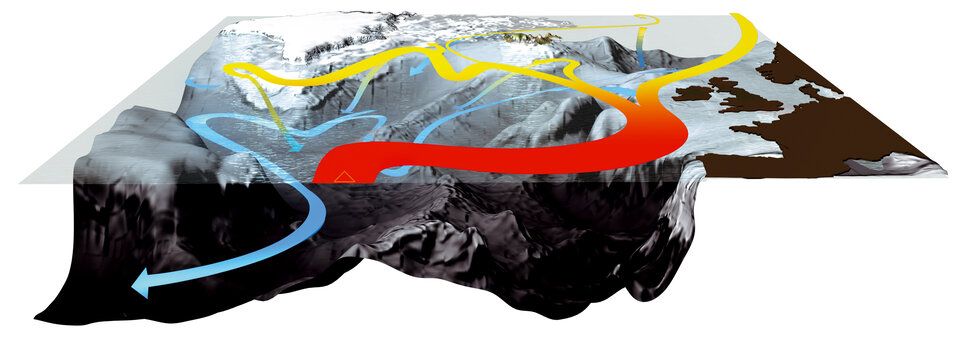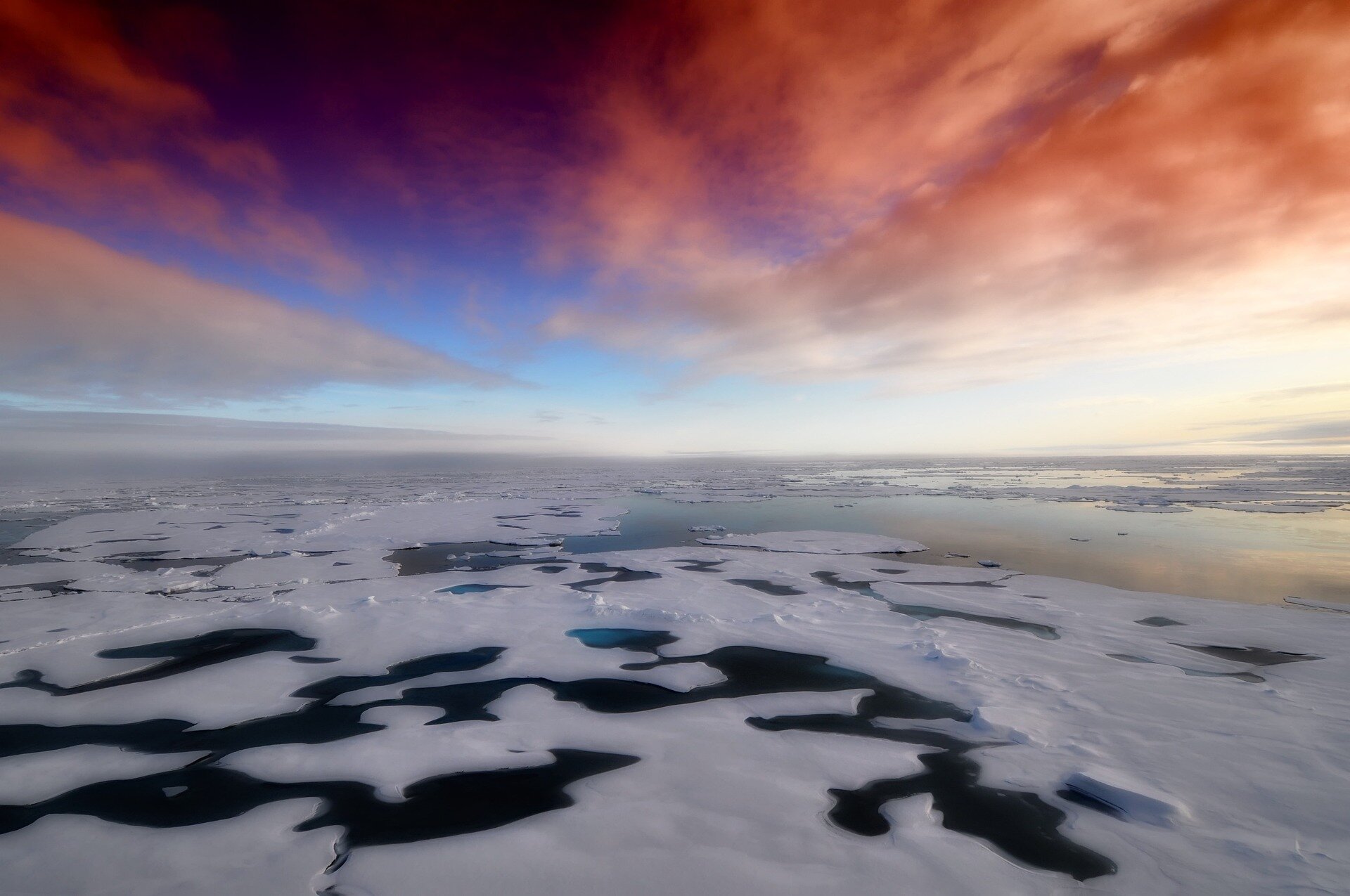Sea ice
One of the most dramatic signs of climate change has been seen in the extent of Arctic sea ice.
Sea ice typically covers up to 15 million square kilometres of the Arctic Ocean, and up to 19 million square kilometres of the Southern Ocean around Antarctica, during their respective winter seasons. This seasonal cycle of sea ice is one of the most dynamic components of the Earth's climate system.
Satellite records show a constant downward trend in the area covered by Arctic sea ice during all seasons, in particular in summer, with the minimum recorded occurring in the autumn of 2012.
In October 2013, however, CryoSat measured about 9000 cubic km of sea ice – a notable increase compared to 6000 cubic km in October 2012.

Unlike icebergs, which are chunks of ice that have broken off the edges of ice-shelves or fronts of glaciers where they reach the sea, sea ice is seawater that has frozen. It contains little salt as most of it is rejected as it forms. Each year, the polar oceans experience the formation and then melting of vast amounts of sea ice. At the North Pole, an area the size of Europe melts every summer and then freezes again the following winter. The thickness of this sea ice plays a central role in polar climate because it moderates heat transport by insulating the relatively warm ocean from the cold polar atmosphere.
In addition, the seasonal changes of sea ice have a significant influence on the global ocean circulation pattern known as the thermohaline circulation. As ice melts, there is an influx of freshwater into the surrounding ocean. This reduces the salinity and, consequently, the density of the water. Conversely, as the seawater cools and sea ice forms, the salinity and density of the surface seawater increase. This density increase causes the surface waters to sink and effectively to act as a pump, driving deep ocean currents towards the equator and away from the polar regions. To compensate for this loss, a return flow of warmer, less dense surface water is drawn northwards from low to high latitudes.

The Gulf Stream, which carries warm surface water northwards from the Gulf of Mexico to the sub-polar ocean east of Greenland, is extremely important for moderating the climate in Europe. The coastal waters of Europe are a few degrees warmer than waters at the equivalent latitude in the North Pacific. These warm waters mix with surrounding water, and cool and sink as they reach the Arctic. If this circulation pattern were disturbed by reduced sea ice in the Arctic, there could be a profound effect on the strength and direction of this current. Clearly, an improved understanding of the fluxes of Arctic sea ice is important for predicting Europe’s climate.
Regional sea-ice models have been successfully developed over the last decades. However, given the impact that sea ice has on the climate, it is essential to acquire more comprehensive data on sea-ice thickness to improve sea ice models for their implementation in general climate studies.
To further our understanding of the impact that sea ice has on climate and to ascertain whether there is currently a trend towards reduced sea-ice cover, CryoSat is providing new and authoritative data on fluctuations in Arctic and Antarctic sea ice.









